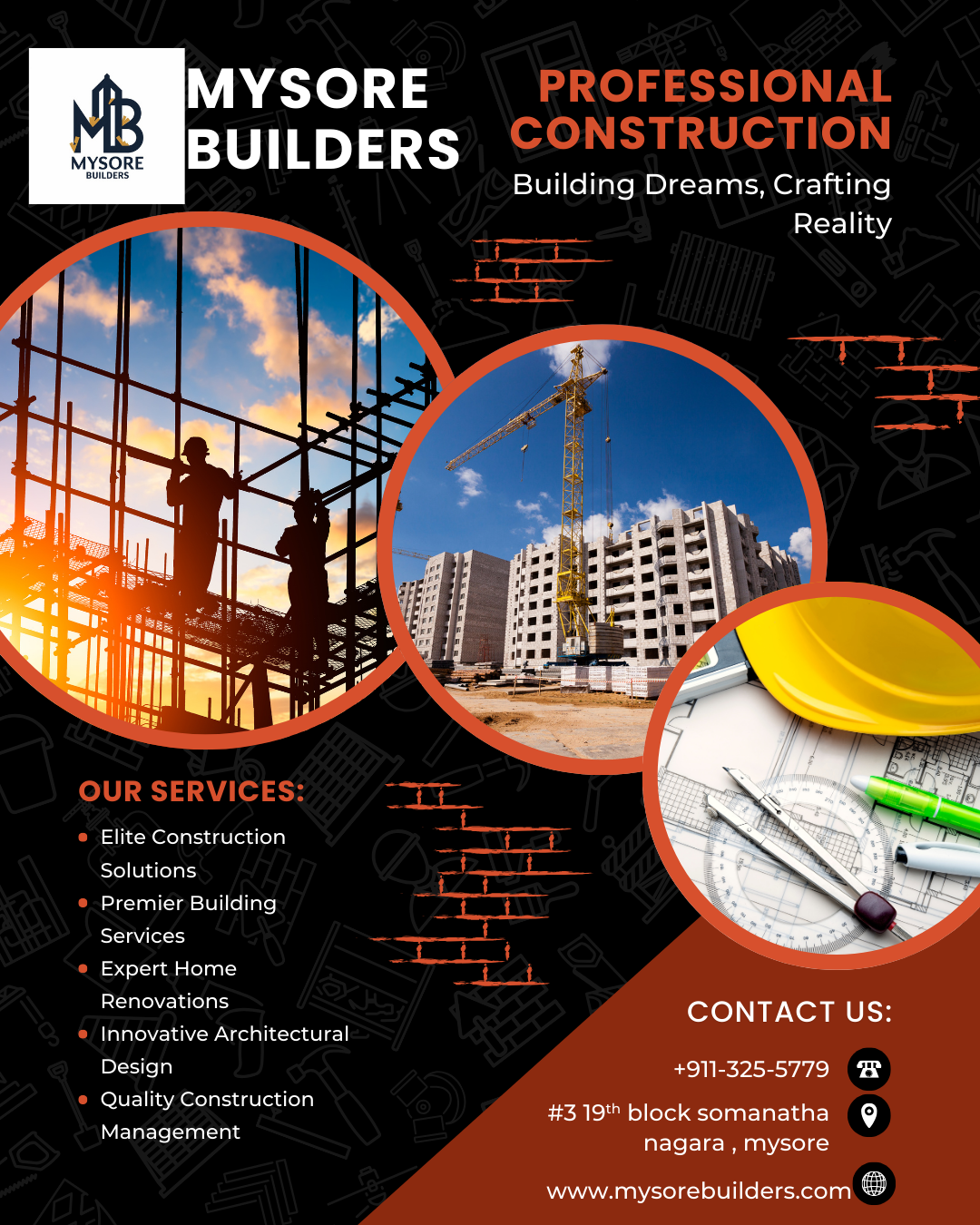
Introduction
Mysore is growing rapidly—not just as a cultural hub, but also as a real estate hotspot. With new homes, villas, and apartments cropping up across areas like Hebbal, Bogadi, and Vijayanagar, construction activity is at an all-time high.
However, in the rush to build fast and cut costs, many builders and homeowners make critical construction mistakes that lead to long-term problems, safety issues, and high maintenance costs.
In this article, we highlight the top 10 construction mistakes commonly seen in Mysore—and how you can avoid or fix them for a smoother, more successful project.
1. Skipping Soil and Site Analysis
One of the most common and costly errors in Mysore construction is neglecting proper soil testing. Areas like JP Nagar and Chamundi Hill slopes have variable soil composition, which can lead to uneven settling or even foundation cracks if not addressed.
Fix:
Always perform a geotechnical investigation before laying the foundation. Ensure the design is tailored to suit the soil type, water table, and slope of the plot.
2. Poor Foundation Planning in Waterlogged Zones
During the monsoon, certain parts of Mysore like Bannimantap and Yadavagiri experience waterlogging. Builders who don’t account for this face issues like foundation seepage and structural weakening.
Fix:
Use raised plinth levels, proper drainage slopes, and waterproofing membranes in the foundation. If the area is prone to flooding, consider pile foundations or stilts.
3. Choosing Cheap Materials Over Quality
It’s tempting to cut corners by using low-cost cement, steel, or plumbing fixtures. But poor materials often lead to rework, leaks, and higher long-term costs.
Fix:
Invest in ISI-certified and industry-grade materials. Partner with reputable suppliers and ask for quality certifications for steel, cement, and other key inputs.
4. Ignoring Vastu Considerations
While not mandatory, many homeowners in Mysore value Vastu compliance. Ignoring this can affect resale value and client satisfaction, especially in residential projects.
Fix:
Consult a Vastu expert during the design stage if required by the client. Align kitchens, bedrooms, and entrances according to regional preferences without compromising structural integrity.
5. Inadequate Waterproofing in Monsoon-Prone Mysore
With 800–1000 mm of annual rainfall, Mysore sees frequent water damage in buildings lacking proper waterproofing—especially in basements, terraces, and bathrooms.
Fix:
Use chemical-based waterproofing systems like crystalline waterproofers, bitumen sheets, and polyurethane sealants. Focus on key areas like bathrooms, water tanks, external walls, and roof slabs.
6. Hiring Unlicensed or Unskilled Labor
Labor shortages often push developers to hire inexperienced masons or electricians. This results in crooked walls, faulty wiring, or unsafe scaffolding.
Fix:
Verify credentials before hiring. Work with contractors who offer skilled, insured, and safety-trained labor. Monitor site work closely and follow a quality checklist.
7. Failing to Get Proper Government Approvals
Building without a BBMP/BDA-approved plan or necessary clearances can lead to fines, work stoppages, or even demolition notices.
Fix:
Ensure the project has approvals for land use, zoning, building layout, and environmental clearance (if needed). Partner with a legal consultant to streamline documentation.
8. Overlooking Scalability and Resale Value
Some homeowners design homes without planning for future extensions, rental units, or accessibility, limiting resale value or flexibility.
Fix:
Incorporate provisions for duplex conversion, additional floors, or flexible room usage—design keeping elderly family members or tenants in mind.
9. Lack of Energy-Efficient or Sustainable Features
In Mysore’s hot summers, homes without insulation or ventilation become uncomfortable and costly to cool. Many homes still lack solar power or rainwater harvesting.
Fix:
Use double-glazed windows, cross-ventilation, and cavity walls. Install solar panels, LED lighting, and passive design elements. Promote IGBC or GRIHA certifications.
10. No Contingency Planning for Delays or Budget Overruns
From labor strikes to raw material shortages, Mysore projects face multiple delay risks. Builders who don’t factor this in often face client dissatisfaction or cost overruns.
Fix:
Add a 10–15% buffer to your timeline and budget. Use construction management tools like Buildertrend or CoConstruct to track costs and milestones in real time.
Bonus Tip: Hire a Reliable Project Manager
A qualified project manager or site supervisor can reduce 80% of the errors listed above. They coordinate between architects, contractors, labor, and clients—ensuring quality control and timely execution.
Conclusion
Every mistake during construction leads to stress, wasted time, and extra costs. By being proactive and working with experienced professionals, you can avoid these pitfalls and ensure your Mysore project is built to last.
Looking for a trusted construction partner in Mysore?
We at Mysore Builders specialize in end-to-end residential and commercial building solutions, focusing on quality, compliance, and client satisfaction. From site selection to finishing touches, we’ve got you covered.


